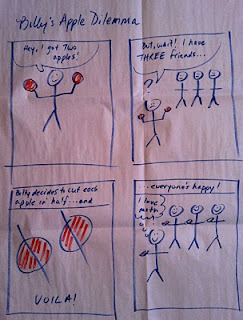I've just returned from a revitalizing weekend at the magnificent Banff Centre for the Arts (the temperature was plus 1!), where I had an opportunity to facilitate a couple of workshops at the 6th annual Learning Through the Arts Banff Teacher Institute. There was lots of cross-pollination as LTTA artists and teachers from across Canada gathered in the mountains to share their arts-based ideas, innovations and experiences for the classroom.
My co-facilitator was Mar'ce Merrell, YA novelist extraordinaire, and together we tackled humanity mapping at the division 2 level. With Mar'ce at the writing helm, and me directing the visual art component, we and our class of teachers explored 19th century immigration to western Canada.
Our lead into the topic was the creation of a thaumatrope (see my December 1, 2009 post for details on this easy but effective optical device). We asked our students to devise an image based on some form of 19th century vehicle -- modes of transport that immigrants would have used to make their way to western Canada. Chinese and European immigrants would have come by sea to reach North America, while Afro-Americans would have come by land.

With some reference material on hand to sift through, students came up with images such... as a steam train on one side of the thaumatrope disk, and steam rising from its stack on the other side; a clipper ship hull on one side and the full set of sails on the other; a wagon train on one, with the seated driver on t'other.
Students drew them in pencil first and after lots of twirling and experimenting with the placement of objects on the second side, outlined their images in fine black Sharpies and coloured them in with pencil crayons.
My second visual arts project with our students was developing a short cartoon strip -- I provided a series of pre-drawn templates with 4 to 12 boxes, gave them a brief run-down on the basic elements to consider when creating a cartoon strip (panels, speech and thought bubbles, narrative devices, etc).
Based on Mar'ce's literary lead-in, in which she guided us through the first chapter of Shaun Tan's "The Arrival," students developed a short immigration story based on their own family history, or on the reference materials provided. Most chose to narrate from personal histories, and the results were wonderful and moving.

I like to use cartoon strips or graphic novels as my art form when I instruct because it covers lots of core scholastic territory -- literacy, fine arts, storytelling -- and I now realize that really any subject matter is a candidate for this art form.
It was one of my students (a French immersion teacher from southern Alberta), who showed me an example of four-panelled cartoon she's used to teach math in Grade 3. I quickly scribbled it up show I could post it here to show you ...
So simple, so effective, so, so, well, so Learning Through the Arts...!!


